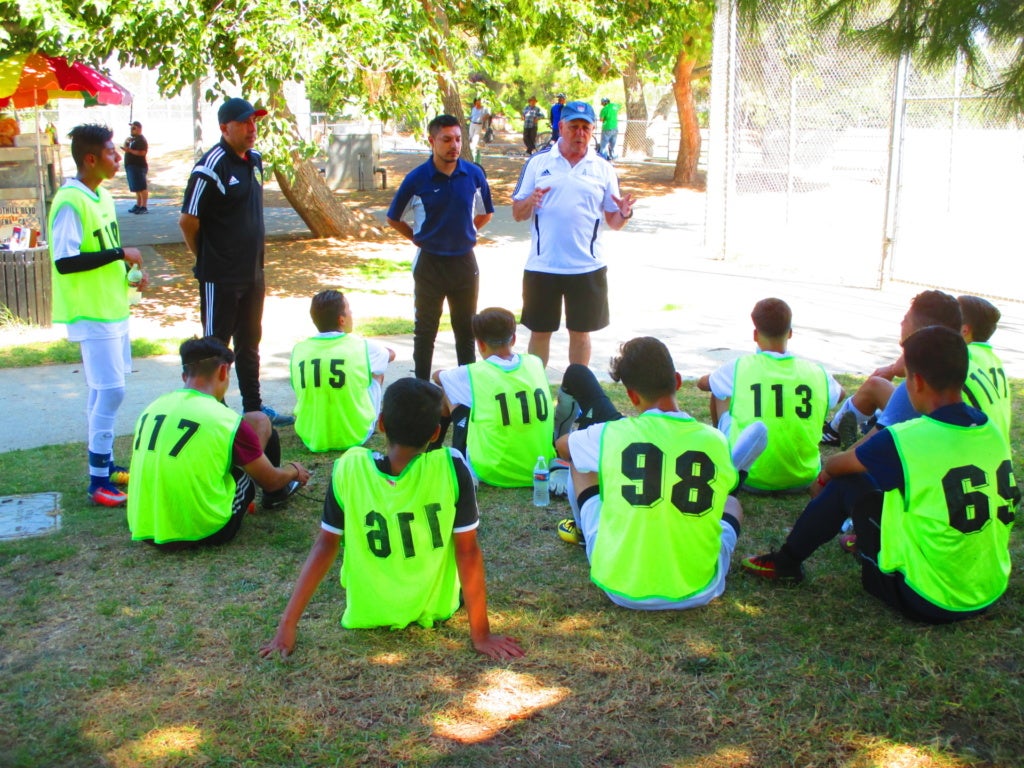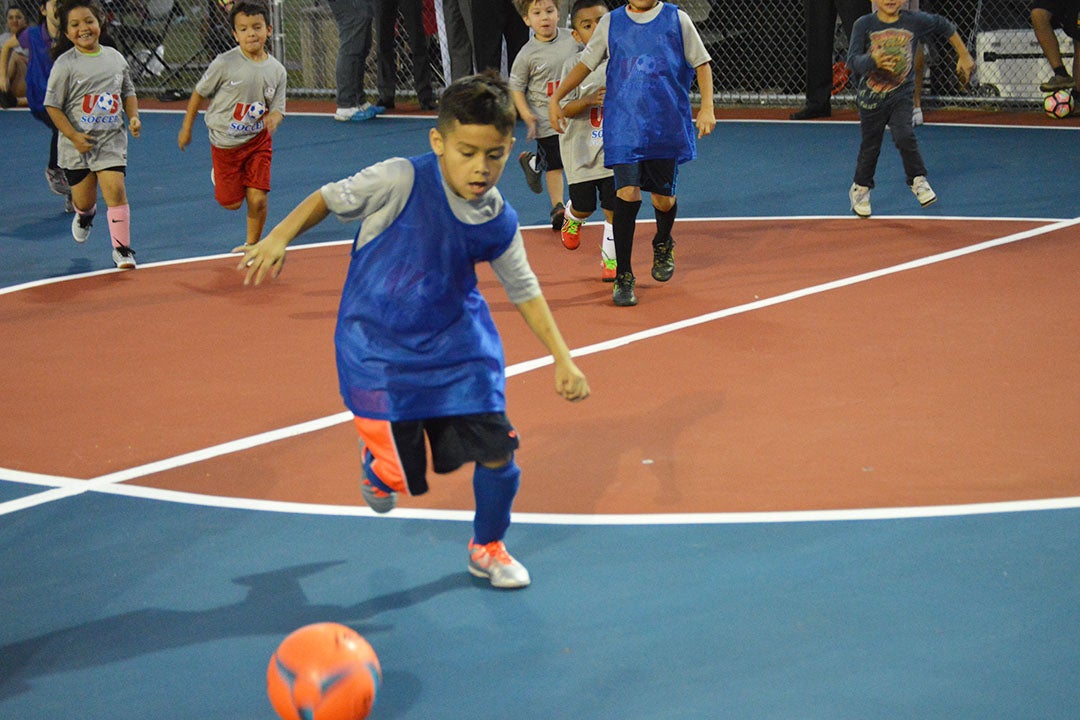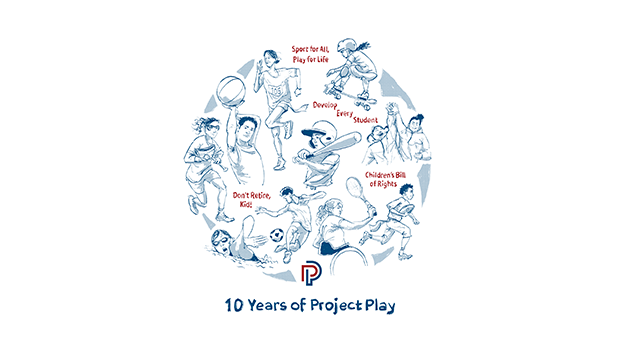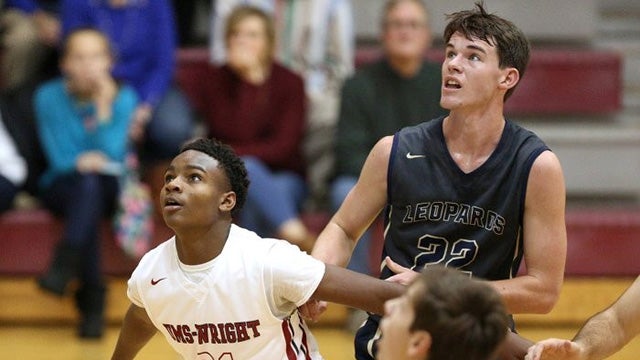
Hugo Salcedo (right) believes more must be done to get Latinos involved in American soccer than just giving them a scholarship. Salcedo engages with players and parents in Southern California independent leagues so trust can be built. (Photo courtesy of Hugo Salcedo)
Before Hugo Salcedo was a US Olympic soccer player and a soccer executive who rose to director of development for the Confederation of North, Central American and Caribbean Association Football (CONCACAF), he was a high school kid with broken English who faced an uncertain future.
Fifty years ago, Salcedo was pushed into high school classes he wasn’t interested in, such as mechanics. His school counselor believed he wasn’t going to college anyway so at least take classes that would help land a job.
“That’s what’s going in some of these schools still today,” Salcedo said. “I think the impact that soccer could have on the Hispanic communities here is much bigger than people anticipate. Soccer could be more than just a game. Look at the social and economic impact by getting exposed to college and social mobility.”
Today, Salcedo is director of the non-profit MaxInMotion, where he organizes free coaching, player clinics, and tournaments for 16 independent leagues in Southern California. Most of the 25,000 youth in these leagues are Hispanic.
Salcedo sees two dramatically different versions of soccer in California. There’s the suburban child, who has known about the University of Southern California and UCLA since a young age. These suburban homes are already reading college materials and charting a path on how to get there.
In the Hispanic homes, Salcedo said, college literature is rarely found because a university is viewed as an unimaginable destination. Salcedo said his son, UCLA men’s soccer coach Jorge Salcedo, tries to recruit Latino players in Northern California and often encounters many kids who are not academically eligible.
MaxInMotion pays for kids to play soccer who can’t afford the registration fees. But Salcedo didn’t want to his work to only be providing youth scholarships. So he talks to kids and parents, leads coaching courses, takes youth to visit colleges, and tries to understand who the families are on a personal level.
“It’s not so much the language barrier anymore because of phones,” Salcedo said. “We speak English to the kids and Spanish to the parents.”
Salcedo said he is talking with the University of California-Irvine to partner on a diabetes program that would teach healthy habits to MaxInMotion’s soccer communities. Salcedo envisions creating soccer fairs to promote the information.
Isolation is the biggest problem for Hispanic communities, and youth soccer is no different, Salcedo said. Latinos form their own leagues and become afraid that their best teams and players will be plucked away by the suburban, pay-for-play leagues.
“(The mentality is) almost like a gang: ‘This is my territory, nobody mess with ‘em,’” Salcedo said.
Salcedo’s biggest advice: Get the 16 largely-Hispanic leagues he works with to first unify themselves. Teach them how to offer good training, coaching, exposure and other benefits that the suburbs have so players and teams don’t want to leave.
“People move from place to place sometimes to get better, but if you already feel comfortable, there’s no need to move out,” Salcedo said. “Don’t be afraid, be strong. Give your communities the best you can give and then you can grow and everybody wins. Then the best rises.”
Salcedo shared a story of a Hispanic mom who went to the president of an independent soccer league out of concern that her 14-year-old daughter joined a gang. The president advised the mom to find other females in her area to form a soccer team, and the league would do the rest. All of the females are now dedicated to their team and school, according to Salcedo.
“People need to know that not everything is gangs. … People come to the United States and want to be better,” Salcedo said. “They want to belong. We have to help them to belong.”


